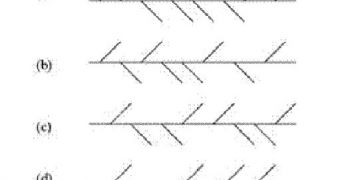As any person who has ever been on a rowboat can tell you, the most fierce opponent a crew can have is itself. Well, not exactly itself, but rather the algorithms it uses when it pulls on the paddles. At the University of Cambridge, rowing is taken very seriously, as evidenced by the fact that Professor John Barrow, at the university's Center for Mathematical Sciences, was pushed quite hard towards working out a way of counteracting the wiggling and maintaining the boat more stable.
The pressure seems to have paid off, as Barrow not only found one, but also several new algorithms that, if used properly, could make it a lot easier for the people applying them to win a complicated challenge. Scientifically, the wiggle motion is known as the oscillating non-zero transverse moment. The main question that the scientist had to answer was how to arrange a number of eight individuals into a specific pattern inside the boat, so as to ensure that the entire coxless watercraft remained wiggle-free. This placement has a significant consequence on the dynamics of the craft, and can mean the difference between winning and losing.
Traditionally, rigs are set up in such a way that rowers alternately pull oars on each side of the boat. "The traditional rig appears symmetrical and simple in ways that might tempt you into thinking it is in every sense optimal. However, this is not the case," Barrow explains. He adds that the balance of forces that keeps shifting as the rowers move their center of gravity is what will always create wiggles in this type of setups. In his investigations, the expert managed to discover four, eight-men setups that featured a zero transverse moment. The work was based on the setups discovered by the Moto Guzzi Club team on Lake Como, in 1956.
He goes on to say that only numbers dividable by four can be separated into setups that produce a zero transverse moment. The expert says that his idea and way of constructing the setups could theoretically be a applied to numbers larger than eight, but also to crews that are significantly smaller. For example, he hypothesizes that three crew members could be set up in a stable configuration. Barrow's colleagues admitted that his work was to be considered a master's work in the field, Technology Review reports.

 14 DAY TRIAL //
14 DAY TRIAL //